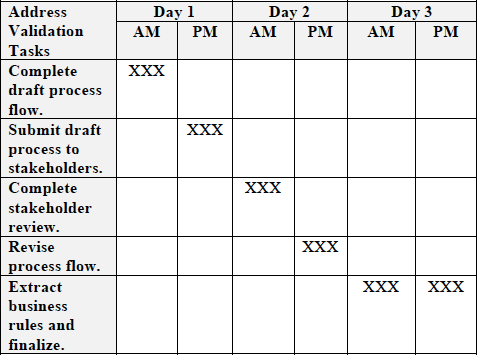Time in a Box
The corporation I worked for had been informed six months prior that specific security measures had to be implemented or the organization would not be able to take a credit card payment. Twenty percent of the work was completed and only thirty days remained when the task was assigned to my team. We completed the analysis and remediation of eighty percent of the applications in exactly twenty-nine days. How did we accomplish this impossible mission? By timeboxing.
A timebox is a technique of creating a "box" of time with a deliverable at the end of each box. The time box reveals how much work must be completed in a specific period. Creating the time boxes for an effort may take a few hours but will improve your success meeting deadlines.
Begin by listing all the tasks: completed, in progress, and not started. Go back through the list and identify the complexity of each process. Work on complex processes needs to be started as soon as possible as they need the most time to finish. Reorganize your list of processes based upon dependency. As a simple example, the task assigned to you is to complete extraction of business rules for a Billing process within thirty days; the Billing process depends upon the Ordering process, and both the Billing and Order processes depend upon Address Validation. Although there is dependency between processes, they can still start concurrently. My rule of thumb is to complete all dependent processes within the first one-third of the time box to allow time for integration, review, and revisions. My initial time boxes would look like this:
Because the Ordering process depends upon Address Validation, the Address Validation should be completed in the first one-third of the Ordering time box. Now the need to complete the Address Validation in the first three days is revealed:
How to complete the Address Validation process in three days? Decompose the task into subtasks, and the days into half days:
The timeboxes will reveal time available for each item to meet the deadline. You may typically spend forty hours creating a process flow, but for this example, you will have to complete the flow in four hours!
Timeboxes can be used for every part of your work and personal life; I timebox my vacations down to the hour in order to take in all the sights!
In the words of Victor Hugo:
"He who every morning plans the transactions of that day and follows that plan carries a thread that will guide him through the labyrinth of the most busy life."
# # #
About our Contributor:
Online Interactive Training Series
In response to a great many requests, Business Rule Solutions now offers at-a-distance learning options. No travel, no backlogs, no hassles. Same great instructors, but with schedules, content and pricing designed to meet the special needs of busy professionals.














